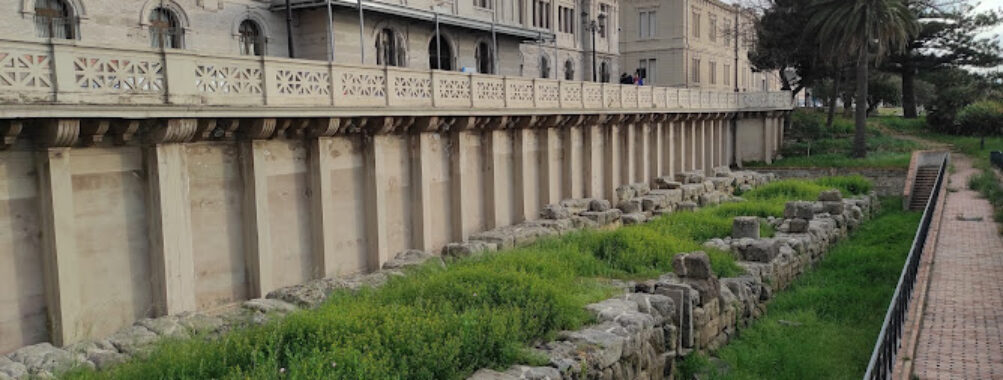
Archaeological Park of the Greek walls
Table of Contents
Description
The Archaeological Park of the Greek Walls is one of those places that quietly commands your attention. You don’t need flashy signs or over-the-top marketing here; the stones do the talking. These ancient fortifications, remnants of a time when Greek settlers shaped the very bones of the region, carry a kind of stillness that almost hums with history. Walking alongside the weathered blocks, you can imagine the centuries of footsteps, trade, and even conflict that once passed here. The scale isn’t overwhelming like some mega-ruins, but that’s part of the charm—it feels approachable, almost personal.
What struck me most on my first visit wasn’t just the walls themselves, but the way they sit in the landscape. They seem to grow out of the earth, as if they’ve always been there. And in a way, they have—at least for as long as human memory goes back in this part of the Mediterranean. You’ll find a mix of visitors: history buffs with guidebooks in hand, families with kids who inevitably end up hopping from stone to stone, and the occasional solo traveler just soaking in the silence. The park is well-kept, but not overly manicured, allowing you to feel the raw edges of the past without a layer of gloss.
Sure, it’s not perfect. There are areas where you might wish for more signage or deeper explanations. But there’s also a certain freedom in that—you get to interpret the place for yourself, to fill in the gaps with your own curiosity. And honestly, that’s half the fun. The Archaeological Park of the Greek Walls isn’t just about looking at old stones; it’s about standing in a spot where time folds in on itself and you can almost hear the echoes of another world.
Key Features
- Authentic remains of ancient Greek fortifications, dating back over two millennia
- Accessible walking paths that allow close-up views of the stonework
- Unobstructed views of the surrounding landscape, perfect for photography
- Family-friendly environment with open spaces for children to explore
- Quiet atmosphere, ideal for reflection and slow-paced exploration
- Opportunities to spot local flora and fauna along the pathways
- Interpretive signage in select areas providing historical context
Best Time to Visit
If you’re like me and prefer to avoid the crowds, aim for early mornings or late afternoons in spring or autumn. The weather is kinder then—warm enough to enjoy without melting into your shoes, and the light has that golden softness that makes everything look like it belongs in a painting. Summer can be hot, and I mean the kind of hot where the stones themselves seem to radiate heat back at you, so bring water and a hat if you go then. Winter has its own quiet beauty, though you might find the days shorter and the air brisk. Personally, I think those shoulder seasons are the sweet spot—you get the atmosphere without the rush.
How to Get There
The park is reachable by both public transport and car, depending on your starting point. If you’re staying nearby, a local bus or even a short taxi ride will do the trick. Driving gives you more flexibility, especially if you want to pair your visit with other historical sites in the area. Parking is generally straightforward, though on weekends it can fill up faster. And if you’re feeling adventurous, cycling is an option—just be ready for some uneven terrain on the approach. The journey there is part of the experience, with glimpses of the countryside that hint at the layers of history you’re about to step into.
Tips for Visiting
First and foremost—comfortable shoes. The paths aren’t treacherous, but they’re not polished marble either. Bring water, especially in warmer months, and don’t forget sun protection. If you’re traveling with kids, they’ll find plenty to clamber over, but keep an eye out for uneven stones. I’d recommend setting aside at least an hour or two; it’s not a place to rush. And here’s a little trick I learned: pause every so often and just listen. You’ll hear the wind moving through the stones, maybe a bird or two, and if you let your imagination wander, the faintest trace of ancient footsteps. Photography lovers—early morning or late afternoon light will give you shots that feel almost cinematic. Lastly, keep your expectations open. This isn’t a theme park—it’s a slice of history, and it rewards those who take the time to really see it.
Location
Places to Stay Near Archaeological Park of the Greek walls
Find and Book a Tour
Explore More Travel Guides
No reviews found! Be the first to review!